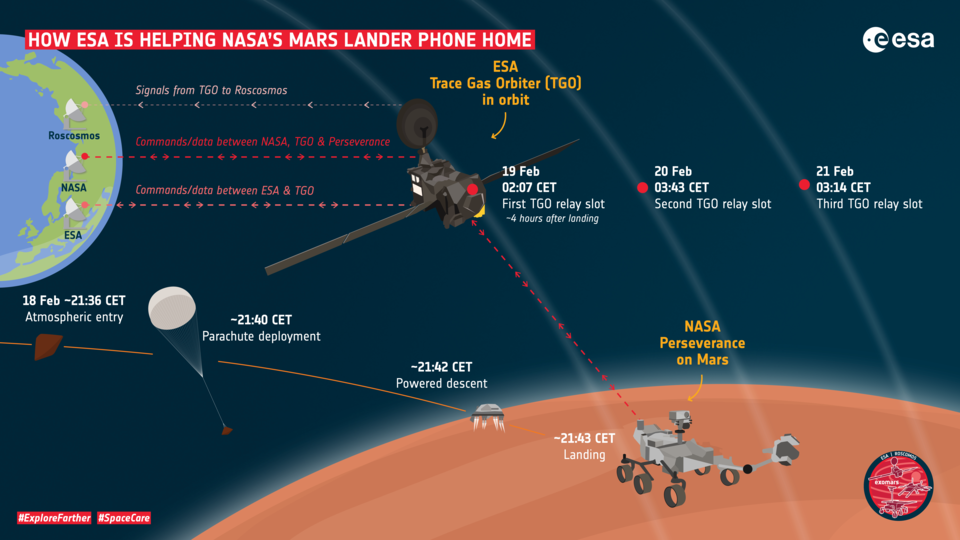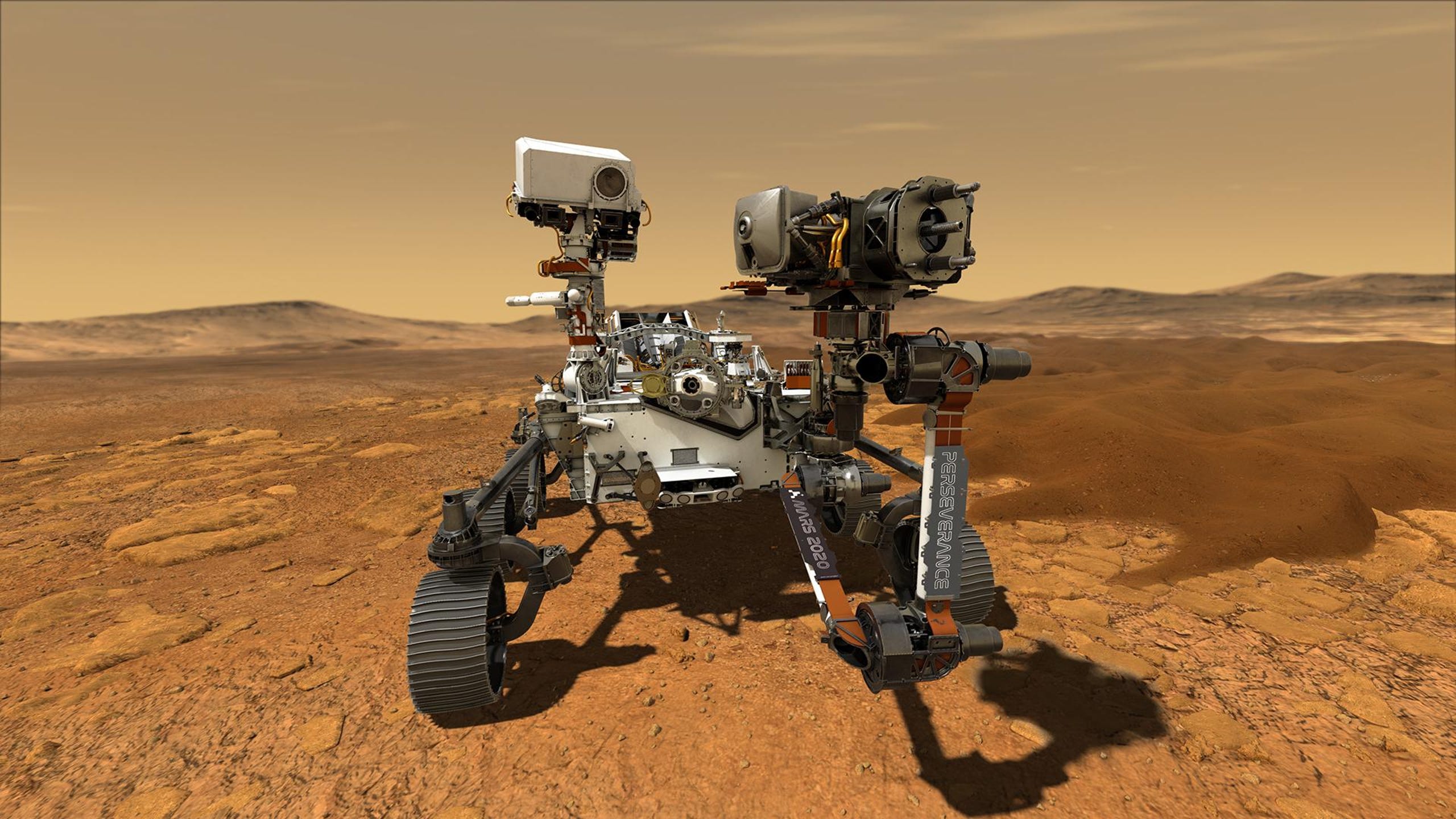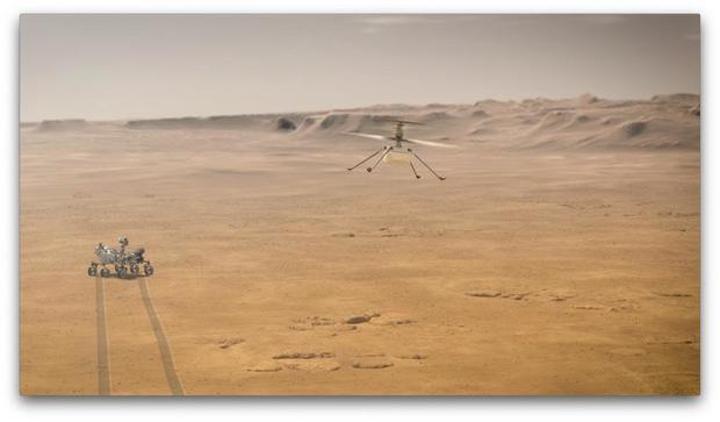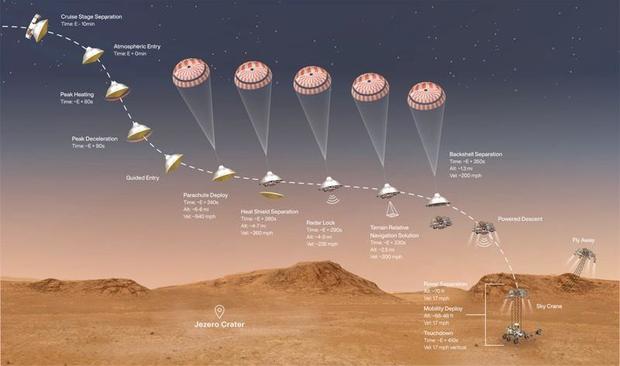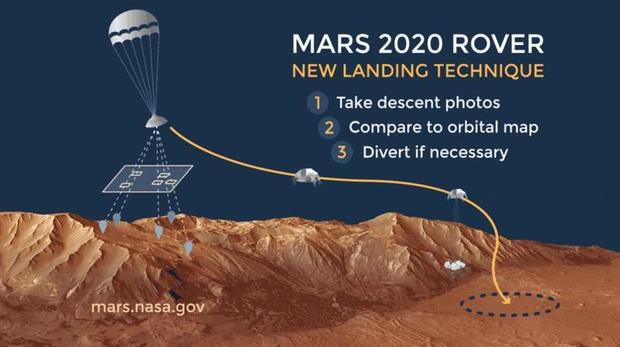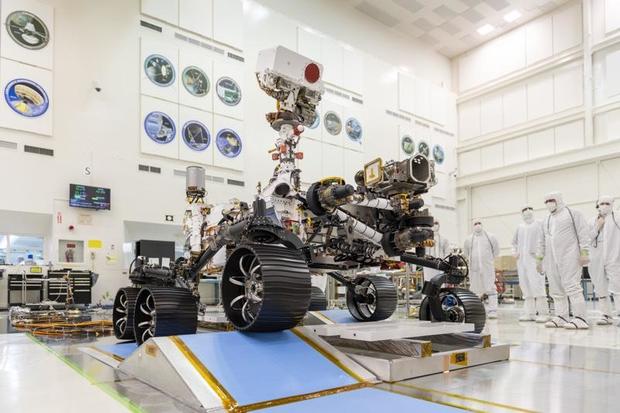12.02.2021

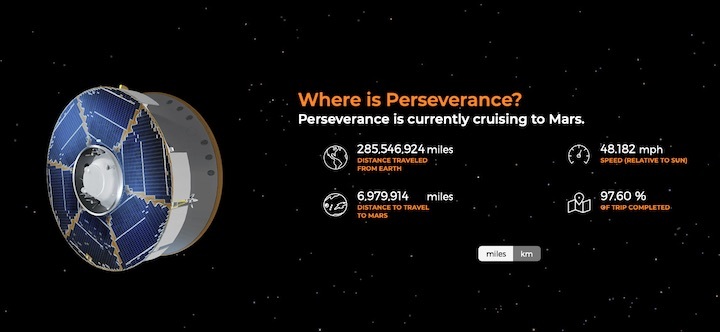
NASA to Offer Spanish-Language Show for Mars Perseverance Rover Landing
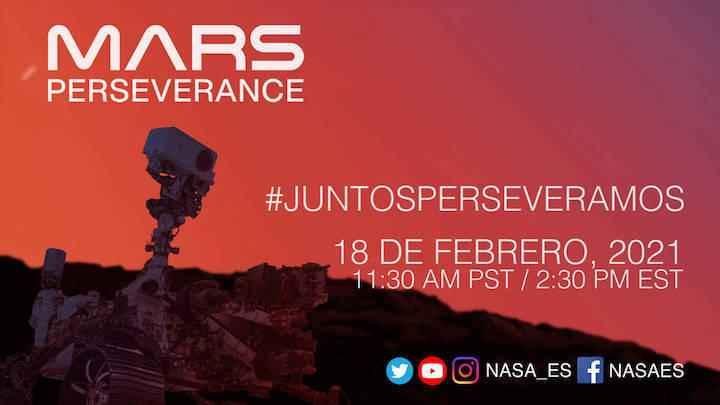
Lee este anuncio de prensa en español aquí.
Among the many firsts of NASA’s Mars 2020 Perseverance mission is the agency’s first-ever Spanish-language show for a planetary landing. On Thursday, Feb. 18, NASA will air “Juntos perseveramos,” a program that will give viewers an overview of the mission to Mars and highlight the role Hispanic NASA professionals have had in it. The program will air at 2:30 p.m. EST on the agency’s website, and Spanish-language social media accounts: Twitter, Facebook, and YouTube. “Juntos perseveramos” will air ahead of Perseverance’s landing on the Red Planet, which will take place approximately 3:55 p.m.
“I’m so proud of NASA’s efforts to better share the excitement of the Perseverance rover landing with the nearly half a billion Spanish speakers around the world. ‘Juntos perseveramos’ (Together we persevere) is NASA’s first Spanish-language show for a historic landing on another planet and will showcase the diversity of the NASA team behind Mars 2020,” said Bhayva Lal, acting NASA chief of staff. “The name of the show recognizes that perseverance and diversity are critical to NASA’s successful undertaking of ambitious missions like next week’s Perseverance landing.”
“Juntos perseveramos” will be hosted by Perseverance engineer Diana Trujillo. A prerecorded section will feature interviews with Hispanic scientists, engineers and astronauts from across NASA. There will also be a children’s segment in collaboration with Sésamo. Students and prominent Hispanic figures from the world of entertainment, journalism, and politics will also send messages of support. Trujillo will offer live English-to-Spanish translation and commentary during Perseverance's entry, descent and landing on Mars.
Launched July 30, 2020, the Perseverance rover will search for signs of ancient microbial life, carefully collect selected rock and sediment (broken rock and dust) samples for future return to Earth, characterize Mar’s geology and climate, and pave the way for human exploration beyond the Moon. It is NASA’s fifth Mars rover and, if successful, will be NASA’s ninth Mars landing.
Perseverance is also carrying along a technology experiment – the Ingenuity Mars Helicopter– that will attempt the first powered, controlled flight on another planet.
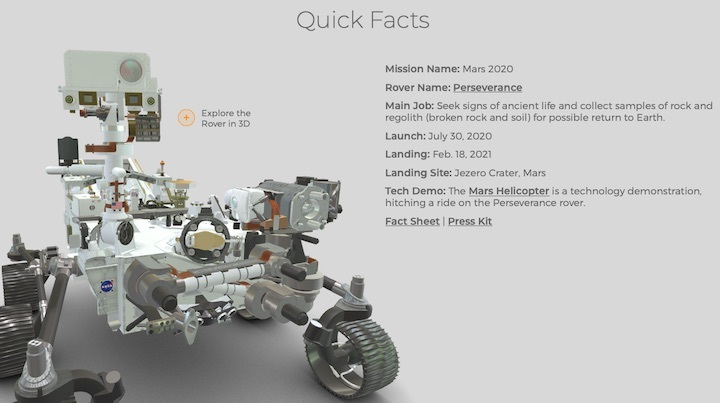
Quelle: NASA
+++
ESA Mars orbiters support NASA Perseverance landing
- On 18 February, NASA’s Mars 2020 Perseverance rover will land on the Red Planet
- ESA’s Mars orbiters – the ESA-Roscosmos ExoMars Trace Gas Orbiter (TGO) and Mars Express – are supporting the landing
- TGO will relay important data from Perseverance to Earth as soon as four hours after landing
- Mars Express is monitoring the local conditions at the landing site, Jezero Crater
- Both ESA orbiters are providing context images of the region
- TGO will attempt to image the rover in the weeks after landing
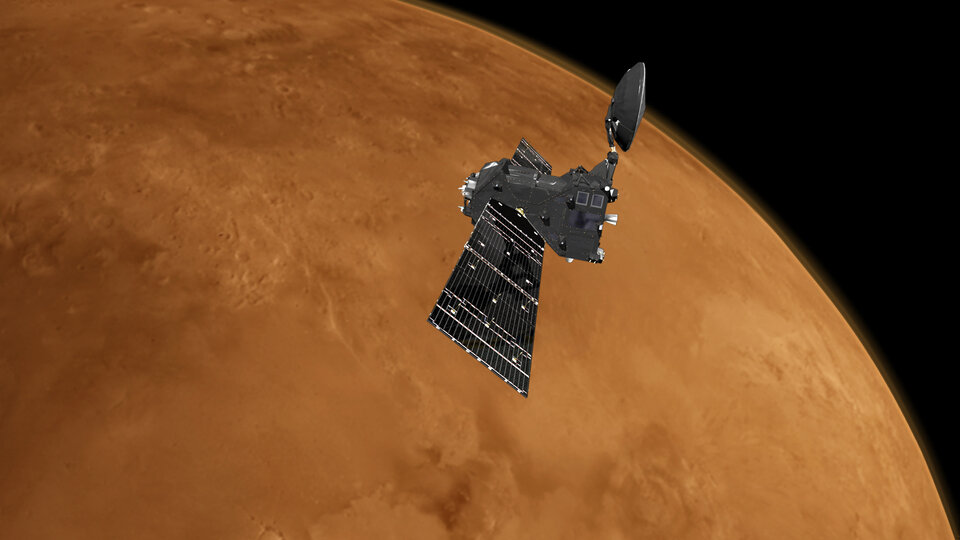
NASA’s Mars 2020 Perseverance rover is due to land on the Red Planet at 21:43 CET on 18 February 2021. In order to communicate with Earth from its landing site in Jezero Crater, the rover will rely on spacecraft orbiting Mars to relay the images and other data it collects back to Earth and pass on the commands from engineers beamed across space in the other direction.
The ESA-Roscosmos ExoMars Trace Gas Orbiter (TGO) is one of these spacecraft. As its orbit takes it over the landing site, TGO will enter communication windows with Perseverance and relay data between Earth and the rover via a network of deep space ground stations on Earth, including ESA’s Estrack network.
Helping Perseverance phone home
The data transmitted by Perseverance in its first hours and days on Mars will be vital to the mission. Did the rover land safely? Are all of its systems functional?
To ensure that this information gets to the engineers on Earth as quickly as possible, TGO and NASA’s mars orbiters will be able to communicate with deep space ground stations on Earth almost twenty four hours a day, seven days a week for the first two weeks after landing. ESA’s ground station network will provide roughly 14 hours a day of this ‘low-latency’ coverage.
“TGO will provide low-latency data relay support to Perseverance during this period, and continue to provide routine relay support afterwards,” says ESA’s Peter Schmitz, TGO Spacecraft Operations Manager. “Our first relay session with TGO will start at 02:07 CET on 19 February, just four hours after landing.”
The Trace Gas Orbiter is the first of two missions of the ExoMars programme - a joint endeavour between ESA and Roscosmos. ExoMars is attempting to determine whether life has ever existed on the Red Planet. TGO arrived at Mars in October 2016 and is conducting a detailed study of the atmosphere and mapping signatures of water below the planet’s surface. The orbiter is operated from ESA’s European Space Operations Centre in Darmstadt, Germany, where mission controllers already have a lot of experience relaying data from existing Mars landers.
“The orbiter usually supports one relay session per lander per day, but from 18 February, we will be supporting an additional two sessions per day for Perseverance,” says Schmitz. “From then on, TGO will relay twice the volume of data to and from the surface of Mars as it does now.”
In total, Perseverance will communicate with NASA or ESA Mars orbiters at least twice a day, and typically four to six times. During these sessions, data and images will be sent to NASA to help the operations team plan the rover’s activities for the following days.
Monitoring conditions at Jezero
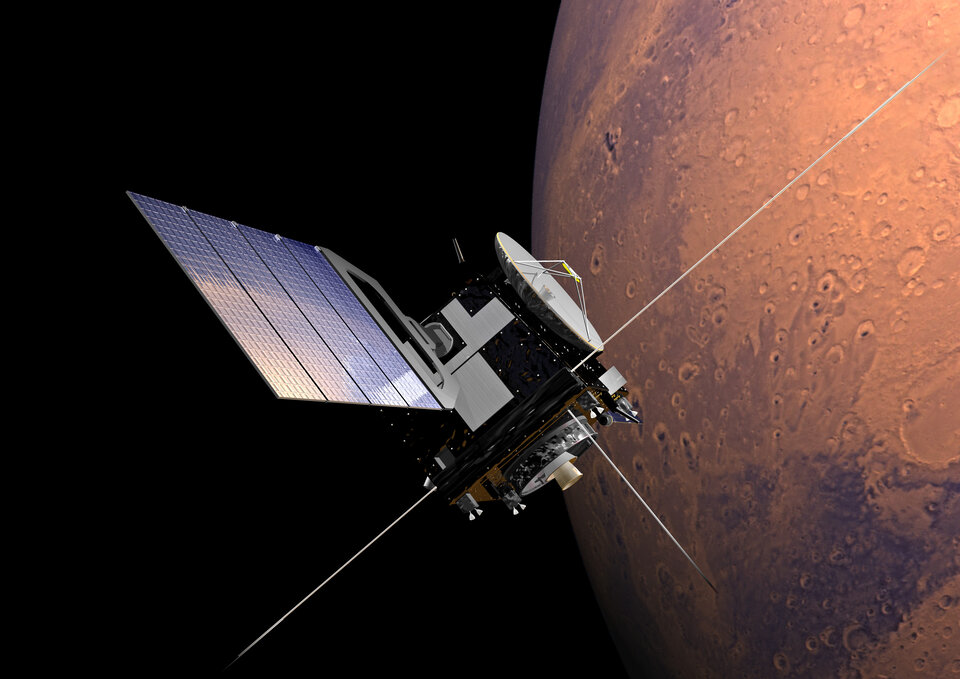
Mars Express is Europe’s first mission to the Red Planet. Since beginning operations in 2004, the durable orbiter has helped answer fundamental questions about the geology, atmosphere, surface environment, history of water and potential for life on Mars.
The high-resolution camera on board Mars Express has sent back thousands of dramatic, 3D views of the martian surface, including those used to produce a virtual flight over Jezero Crater, the planned landing site for Perseverance.
The spacecraft’s Visual Monitoring Camera – also known as the ‘Mars Webcam’ – is providing additional wide context views of the landing region.
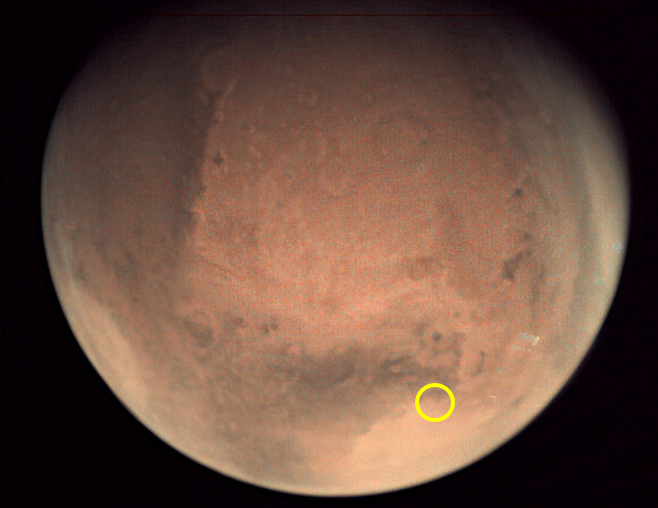
The Mars Express Planetary Fourier Spectrometer (PFS) is monitoring local conditions at Jezero Crater. The information it collects is passed on to the Perseverance Entry, Descent and Landing (EDL) team at NASA and is included in their daily report during the two weeks leading up to the landing.
“The engineers working with EDL systems need precise information on the density of the Martian atmosphere above the site at the time of landing and how it changes with altitude,” says Marco Giuranna, PFS Principal Investigator from Istituto Fisica Spazio Interplanetario in Rome, Italy.
“Having up-to-date knowledge of the temperature, pressure, dust and ice conditions in the atmosphere is crucial for understanding its density and predicting and analysing the trajectory of the rover’s descent to the surface of the Red Planet.”
Quelle: ESA
----
Update: 14.02.2021
.
NASA Invites Public to Share Thrill of Mars Perseverance Rover Landing
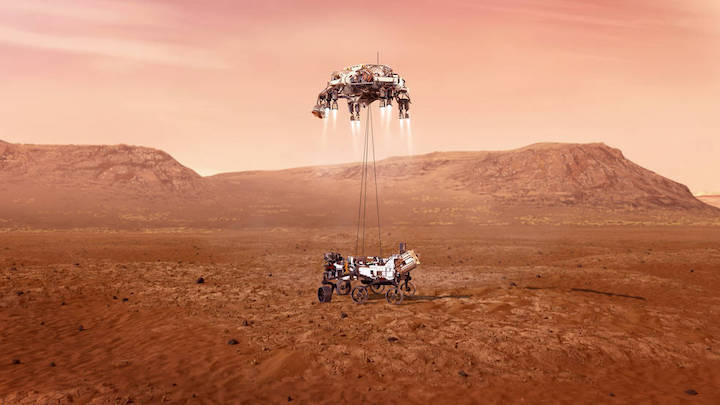
NASA is inviting the public to take part in virtual activities and events as the agency’s Mars 2020 Perseverance rover nears entry, descent, and landing on the Red Planet, with touchdown scheduled for approximately 3:55 p.m. EST Thursday, Feb. 18.
Live coverage and landing commentary from NASA’s Jet Propulsion Laboratory in Southern California will begin at 2:15 p.m. on the NASA TV Public Channel and the agency’s website, as well as the NASA App, YouTube, Twitter, Facebook, LinkedIn, Twitch, Daily Motion, and THETA.TV.
Among the many firsts with this mission is the agency’s first-ever Spanish-language show for a planetary landing. On Thursday, Feb. 18, at 2:30 p.m., NASA will air “Juntos perseveramos,” a show that will give viewers an overview of the mission to Mars and highlight the role Hispanic NASA professionals have had in its success.
During landing, the rover will plunge through the thin Martian atmosphere at more than 12,000 mph (about 20,000 kph). A parachute and powered descent will slow the rover down to about 2 mph (3 kph). During what is known as the sky crane maneuver, the descent stage will lower the rover on three cables to land softly on six wheels at Jezero Crater.
Perseverance also is carrying a technology experiment – the Ingenuity Mars Helicopter – that will attempt the first powered, controlled flight on another planet.
“If there’s one thing we know, it’s that landing on Mars is never easy,” said NASA Associate Administrator for Communications Marc Etkind. “But as NASA’s fifth Mars rover, Perseverance has an extraordinary engineering pedigree and mission team. We are excited to invite the entire world to share this exciting event with us!”
NASA is offering many ways for the public to participate and stay up to date on landing information, mission highlights, and interaction opportunities.
Watch and Participate Virtually
Connect with like-minded space enthusiasts, receive a NASA Social badge, ask questions, and take part in other virtual activities by signing up for the Perseverance Rover Virtual NASA Social event.
NASA also will provide a virtual guest experience for members of the public during landing, with notifications about mission updates, curated mission resources, and a virtual passport stamp available after landing.
Stay connected and let people know you're following the mission on Twitter, Facebook, and Instagram. Join the conversation, ask questions, and get answers online by using #CountdownToMars.
Follow and tag these accounts:
Twitter: @NASA, @NASAPersevere, @NASAMars
Facebook: NASA, NASAPersevere
Instagram: NASA
At 7 p.m. EST Tuesday, Feb. 16, a NASA Social live show previewing landing day will stream live via the JPL YouTube, Facebook, and Twitteraccounts.
You also can follow every step of entry, descent, and landing with this visualization, and get a preview of all the excitement with a new video.
Opportunities for Students, Teachers, Educators
Design, build, and land your own spacecraft – just like NASA scientists and engineers do. Join NASA’s Mission to Mars Student Challenge, where classrooms, informal education groups, families and individuals will be able to participate in landing week question-and-answer sessions with mission experts and submit student questions and work that could be featured during NASA broadcasts leading up to and on landing day.
A Mars 2020 STEM toolkit also is available, with stories on the students who named Perseverance and Ingenuity, opportunities to code your own Mars exploration games, and more.
Join scientists from NASA and JPL at a briefing of the National Academies Space Studies Board and Aeronautics and Space Engineering Board Wednesday, Feb. 17, at 11:30 am EST to hear more about Perseverance’s journey to Mars’ Jezero Crater, NASA’s Mars Sample Return, and the challenges the team has overcome. Participants include:
- Thomas Zurbuchen, NASA associate administrator for science
- Lori Glaze, director of NASA’s Planetary Science Division
- Bobby Braun, Mars Sample Return program manager at JPL
- Matt Wallace, deputy project manager, Mars 2020 at JPL
- Katie Stack Morgan, Mars 2020 deputy project scientist at JPL
Interactive Experiences
You also can try out a virtual photo booth that allows you to pose next to the Perseverance rover, listen to the differences between sounds on Mars and Earth, and check out other interactive experiences on the mission’s website.
Send Your Name to Mars, Again!
Perseverance is carrying three dime-size chips with 11 million names submitted by people all over the world. Anyone who missed the chance to send their name on Perseverance can sign up to send their name on a future Mars mission at:
https://mars.nasa.gov/participate/send-your-name/mars2020
Lighting Towns Red Around the World
To celebrate Perseverance’s Red Planet landing, the Empire State Building in New York will light its tower red on Tuesday, Feb. 16, starting at sunset until 2 a.m. the following morning. In addition, the Los Angeles International Airport gateway pylons will glow red from sundown on Wednesday, Feb. 17, through sunrise Friday, Feb. 19. Other sites in the United States recognizing the upcoming landing include select buildings along the Chicago skyline, such as the Adler Planetarium. NASA invites cities around the country and world to participate in “lighting the town red.”
Additional Resources
Press kits for the Perseverance rover landing and the Ingenuity Mars Helicopter are available and feature deeper dives into the mission and science, as well as links to image and video resources.
A Perseverance landing toolkit provides additional details about all the activities planned for landing week, as well as additional links for learning more about the rover and helicopter.
NASA Televised Event Schedule
In addition to social media coverage, NASA TV will air a number of events leading up to, including, and following the landing.
Members of the public may ask questions on social media during the events using #CountdownToMars.
The following events currently are scheduled to air live (all times Eastern). Please check the NASA TV schedule for the latest updates:
Tuesday, Feb. 16
1 p.m. – News conference: Mission engineering and technology overview
3:30 p.m. – News conference: Mission science overview
Wednesday, Feb. 17
1 p.m. – News conference: Mission landing update
3 p.m. – News conference: Searching for Ancient Life at Mars and in Samples Returned to Earth
Thursday, Feb. 18
2:15 p.m. – Live landing Broadcast on the NASA TV Public Channel and online.
- In addition, an uninterrupted clean feed of cameras from inside JPL Mission Control, with mission audio only, will be available starting at 2 p.m. on the NASA TV Media Channel, and at JPL’s Raw YouTube channel.
A 360-degree livestream of the Mars landing from inside mission control, including landing commentary, will be available at the JPL’s main YouTube channel.
2:30 p.m. – “Juntos perseveramos,” the Spanish-language live landing commentary show, will air on NASA en Español’s YouTube channel.
Approximately 3:55 p.m. – Expected Perseverance touchdown on Mars
No earlier than 5:30 p.m. – Postlanding news conference
Friday, Feb. 19
1 p.m. – News conference: Mission status update
Monday, Feb. 22
2 p.m. – News conference: Mission status update
To watch news conferences and commentary online, please visit:
http://www.youtube.com/nasajpl/live
A complete list of ways to watch online can be found at:
Quelle: NASA
----
Update: 15.02.2021
.
After 300 million miles, NASA's Perseverance rover set for Mars touchdown
On the surface, Mars presents itself as a world on the verge of inhospitality.
Average temperatures that hover around negative 81 degrees. A thin, carbon dioxide-rich atmosphere sometimes rendered opaque by planet-wide dust storms that can even be seen from Earth. Gravity that’s just one-third of what humans have evolved to tolerate.
But the red planet’s features tell a different story.
Looking at photos captured by satellites in orbit, it doesn’t take much imagining to see Mars was likely once home to rivers of running water and enormous crater-lakes. With the right conditions, perhaps this planet that gets its rusty color from iron oxide-rich rocks could once have been suitable for life – or at least life as we know it.
This dichotomy has left experts asking one of the most difficult-to-answer questions in science today: What happened to Mars, and can the same thing happen here on Earth?
“We know that Mars had a bad past,” said Thomas Zurbuchen, associate administrator of NASA’s Science Mission Directorate. “We used our Spirit and Opportunity rovers (2003) to follow the water in search of answers as to why this once ocean world is now dry and desolate. Following those missions came our Curiosity rover, which landed on Mars in 2012 and is still operating.”
Now it’s time for NASA’s next robotic explorer – Perseverance – to follow in the dusty tracks of its predecessors. After a 293 million-mile trek across the expanse since its July 2020 launch from Cape Canaveral Space Force Station, the upgraded rover is slated to land on the red planet at 3:55 p.m. Eastern time Thursday.
Its target: Jezero Crater, a harsh surface feature that was likely once a deep lake fed by rivers of running water.
“Perseverance is our robotic astrobiologist, and it will be the first rover NASA has sent to Mars with the explicit goal of searching for signs of ancient life,” Zurbuchen said.
But before it can begin roving its targeted landing site at a neck-breaking 0.1 mph, Perseverance has to pull off a series of risky landing maneuvers all by itself.
The landing
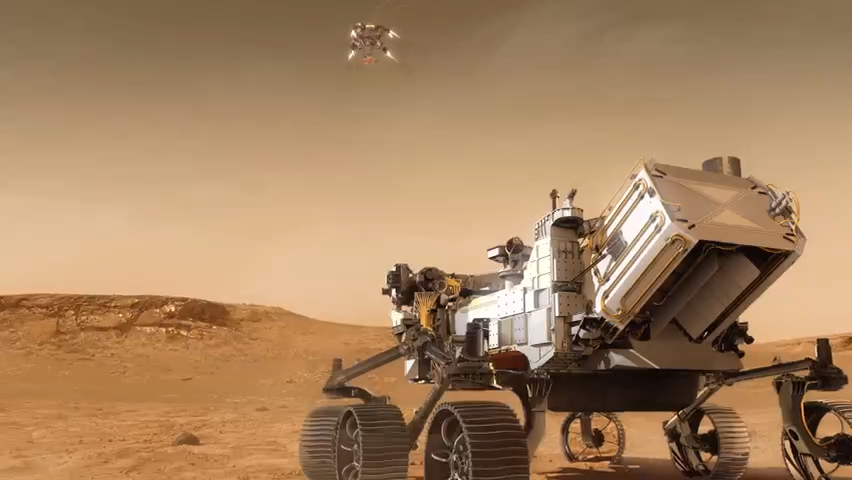
Getting to Mars with help from a United Launch Alliance Atlas V rocket and interplanetary cruise stage was one thing, but slowing down from thousands of miles an hour to a soft 1.7 mph at landing is another.
This seven-minute process – from 3:48 p.m. to 3:55 p.m. Eastern – is known as the “seven minutes of terror.” Because signals take 11 minutes to reach Earth, human input in the event of a mishap is impossible – Perseverance is on her own.
The nail-biting entry is made even more tense by the fact that once mission managers at NASA’s Jet Propulsion Laboratory in California get the first confirmation of entry, Perseverance will have already landed – or crashed – in real-time. The unavoidable signal delay, however, is a short hurdle for teams that have been waiting for this moment for a decade.
“Landing on Mars is really all about finding a way to stop and land in a safe place,” said Al Chen, NASA's entry, descent, and landing lead at the Jet Propulsion Laboratory in California.
As it approaches Mars’ thin atmosphere, the heat shield affixed to the front of Curiosity’s protective capsule will bear the brunt of fiery entry while also acting as an airbrake of sorts. A massive 70-foot parachute then automatically deploys, further slowing down the 2,200-pound rover.
“While coming down on the parachute, Perseverance needs to figure out where it is,” Chen said. “It’ll jettison the heat shield that protected us during entry and it will use a radar and a new system we call Terrain-Relative Navigation to figure out where it is.”
After the newly exposed radar and cameras have a lock on Perseverance’s location and landing prospects, it’s time for the riskiest part: dropping out of the protective capsule with a web of machinery and eight retrorockets, which begin firing to slow the rover down.
About 65 feet from the surface, the still-firing retrorockets slow Perseverance’s approach to 1.7 mph. The descent stage then kicks off the “Sky Crane Maneuver,” which uses strong nylon cords to slowly lower the rover down to the ground. After confirmation of touchdown, the sky crane severs the cords and flies off to put distance between it and the rover.
Perseverance is expected to begin transmitting photos of its new surroundings immediately after landing.

